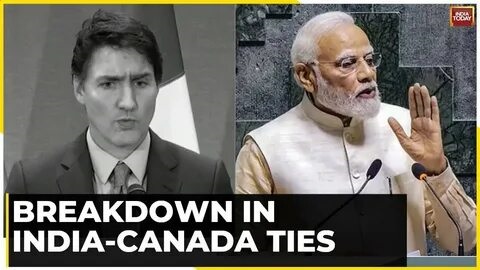
The sharp deterioration of relations in the India-Canada-USA triangle in connection with the murder of one of the leaders of Indian separatists in Canada a year ago could have very serious consequences for world politics. The situation described in his commentary by M.K. Bhadrakumar, Indian Ambassador and prominent international observer.
The rift between India and Canada over the killing of Khalistani activist Hardeep Singh Nijjar has deepened into a first-rate diplomatic crisis with the ‘tit-for-tat’ expulsion of senior diplomats, including the heads of missions.
Meanwhile, the broader question of alleged Indian interference in the internal affairs of the two North American countries is becoming the leitmotif. It hurts. A Reuters commentary hit the nail on the head: “For a developing country courting overseas investment, seeking to embed itself into the world’s supply chains, and encouraging its companies to go global, it is unhelpful, to say the least, to be dubbed by a rich country as the second-most significant “foreign interference” threat after China…
“Canada is home to some of the world’s big global investors, from Brookfield to the Canada Pension Plan Investment Board and Ontario Teachers’ Pension Plan. Their leaders, who between them manage some $1.7 trillion in assets may suddenly, for example, find it awkward to travel and negotiate deals in India if their government is effectively persona non grata in the emerging market.”
The Washington Post succinctly captured the matrix of Howdy Modi when the daily reported that “A rousing endorsement of Modi from a US immigrant group that is highly successful, by income and education metrics, and is the largest Indian diaspora in any country, sends multiple signals. The huge crowds of supporters overseas help reaffirm Modi’s support at home, and offer a jab at his detractors. For the broader audience in the host country [US], the message is that this support could transfer to Modi’s hosts [in the Beltway], if they are well disposed to India’s concerns [eg., farmers’ protests, Khalistani separatism, etc.]”
The choice is between writing for today, with adrenaline flowing, or to put the crisis in the India-Canada-US triangle in proper perspective through a candid political dialogue, seal it in a lead casket and bury it for posterity.
For all three countries, the stakes are exceedingly high for ensuring that a new normal is restored as quickly as possible. But the probability is that a denouement may have to wait. The Canadian federal election must take place by October 20, 2025 and the post-Biden presidency in the US begins on January 20.
No doubt, foreign interference in the democratic process in Canada and the US is a combustible campaign issue. And the ethnic Sikh population in the two countries is assertive. Delhi suspects collusion between the local authorities and the Sikh separatists.
Are we to believe that coordinated moves by the Canadian and US authorities are no longer taking place? The US and Canada are tied to each other by an umbilical cord, which is not only about their Anglo-Saxon ancestry, but their tight embrace as strategic partners. Analysts even predicted a future annexation of Canada by its Big Brother.
When it comes to security issues, the US and Canada operate from an exclusive platform of international spy network created during World War 2 — the Five Eyes — borne out of a profound realisation that while intelligence is not a magic bullet in the wider context of decision-making, marrying up intelligence record with strategic and operational decisions can be a game changer.
Suffice to say, the tensions within the India-Canada-US triangle today arise when transparency is lacking in their relationships. It is a moot point whether it all began when Modi waded into the cauldron of US domestic politics or whether Trudeau triggered it by canvassing for the farmers’ protest in India.
The US is the only winner here. The Biden White House skilfully handled the fallouts from the alleged assassination plot against Pannun. Several billion dollars worth arms deals have been wrapped up in these past couple of years alone. Modi cleared a $3 billion drone deal just last Wednesday (within a month of Biden raising it in Delaware). The arms trade between India and the US has touched an impressive figure of $25 billion. At the present rate, the US arms industry may give a run for the money to Russians in a conceivable near term.
An emboldened Delhi takes a hard line on Trudeau, whereas, it is offering ‘cooperation’ to the US. A modus vivendii becomes possible if the US accepts the Indian finding that certain rogue elements might have acted on their own.
However, the big question remains: Why is there such ambivalence on the part of Washington and Ottawa regarding Khalistani separatism? This is not a new phenomenon. One bloody saga ended after much suffering all around in India culminating in a traumatic ‘regime change’ four decades ago. That is why, a discussion at the political level with the US and Canadian leaderships becomes necessary.
Even if one were to assume that India now has a state policy to erase Khalistani separatist elements from the face of the earth, is that something typical of Indian statecraft? The US holds the champion’s trophy in political assassinations.
Remember, Trump, in collaboration with Israel’s Benjamin Netanyahu, assassinated the Iranian general Qassem Soleimani while on a visit to Baghdad — and later bragged about it to his friends. The paradox is, Biden today has turned into Trump’s guardian angel, and sternly demands from Tehran that the tragic chapter be closed.
read more in our Telegram-channel https://t.me/The_International_Affairs

 11:08 22.10.2024 •
11:08 22.10.2024 •






















